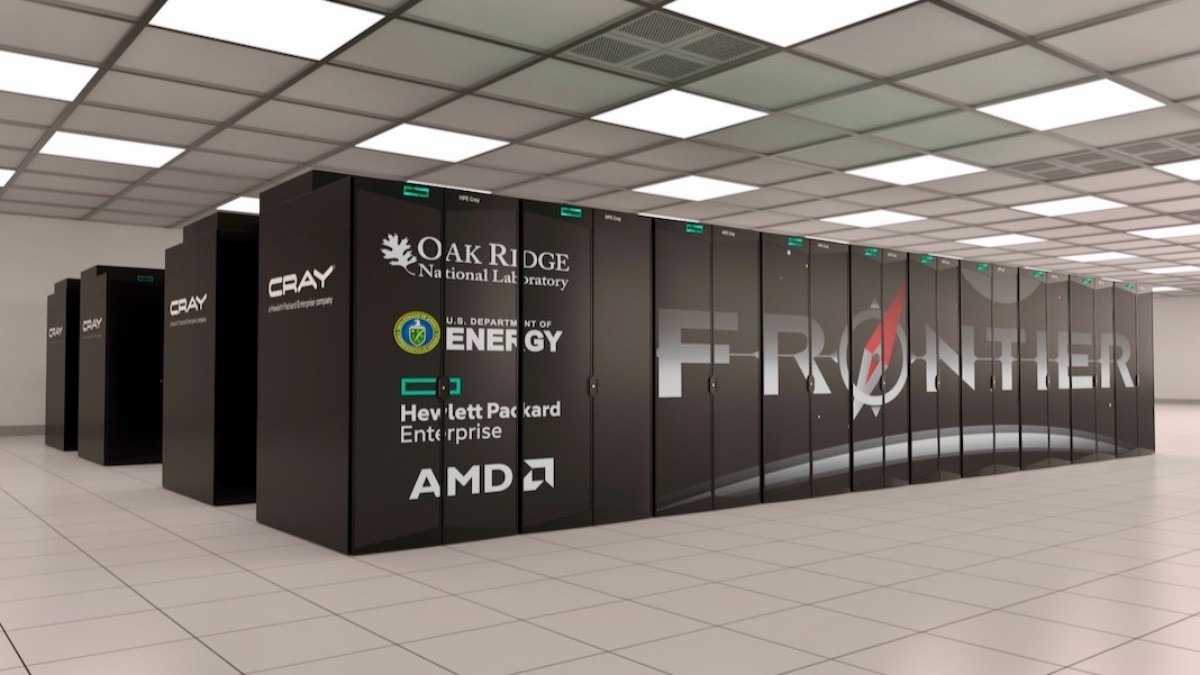Redazione RHC:19 Setembro 2025 10:52
O supercomputador “Fugaku“, desenvolvido por Fujitsu em colaboração com o Instituto RIKEN de Pesquisa Física e Química, dominou o ranking das máquinas mais rápidas do mundo durante anos graças à sua BRAÇO arquitetura. Sua supremacia, no entanto, foi quebrada por um novo jogador: “Fronteira.”
“Frontier” reivindicou o título de supercomputador mais rápido, retornando a arquitetura x86 ao topo após o longo domínio de Fugaku. Essa conquista representa uma mudança significativa no cenário dos sistemas de computação de alto desempenho.
A máquina usa o processadores de servidor EPYC de terceira geração, codinome “Milão, juntamente com o Instinto MI250X placa gráfica acelerada, projetada com um OCP módulo acelerador. A combinação dessas tecnologias permitiu um desempenho sem precedentes.
O sistema é baseado no HPE Cray EX235a, composto por 220 nós de computação para um total de 8,73 milhões de núcleos. Ele também possui 128 GB de memória HBM2e ECC de alta densidade, o que aprimora seus recursos operacionais e garante estabilidade de processamento.
Graças a esta arquitetura, “Frontier” é o primeiro supercomputador a exceder consistentemente o limite de exaflop. Seu poder efetivo é 1.102 ExaFLOPS, um valor que o coloca significativamente acima do Fugaku, que é de 442,01 PFLOPS.
No panorama internacional, o supercomputador “LUMI“, do Centro Finlandês de Ciência da Computação, alcançou o terceiro lugar e se tornou o mais rápido da Europa. “Adastra“, um sistema compartilhado entre instituições francesas, também se destacou, entrando no top dez em décimo lugar e se estabelecendo como o segundo mais rápido da Europa.
Olhando para o futuro, a Intel planeja lançar a próxima geração do processador Xeon Scalable, codinome “Sapphire Rapids”, junto com a placa de vídeo “Ponte Vecchio”. Essas tecnologias serão a base para “Aurora”, o supercomputador em desenvolvimento no Laboratório Nacional Argonne, nos Estados Unidos, que deve agitar o ranking mundial mais uma vez.
Redação
A equipe editorial da Red Hot Cyber é composta por um grupo de indivíduos e fontes anônimas que colaboram ativamente para fornecer informações e notícias antecipadas sobre segurança cibernética e computação em geral.
